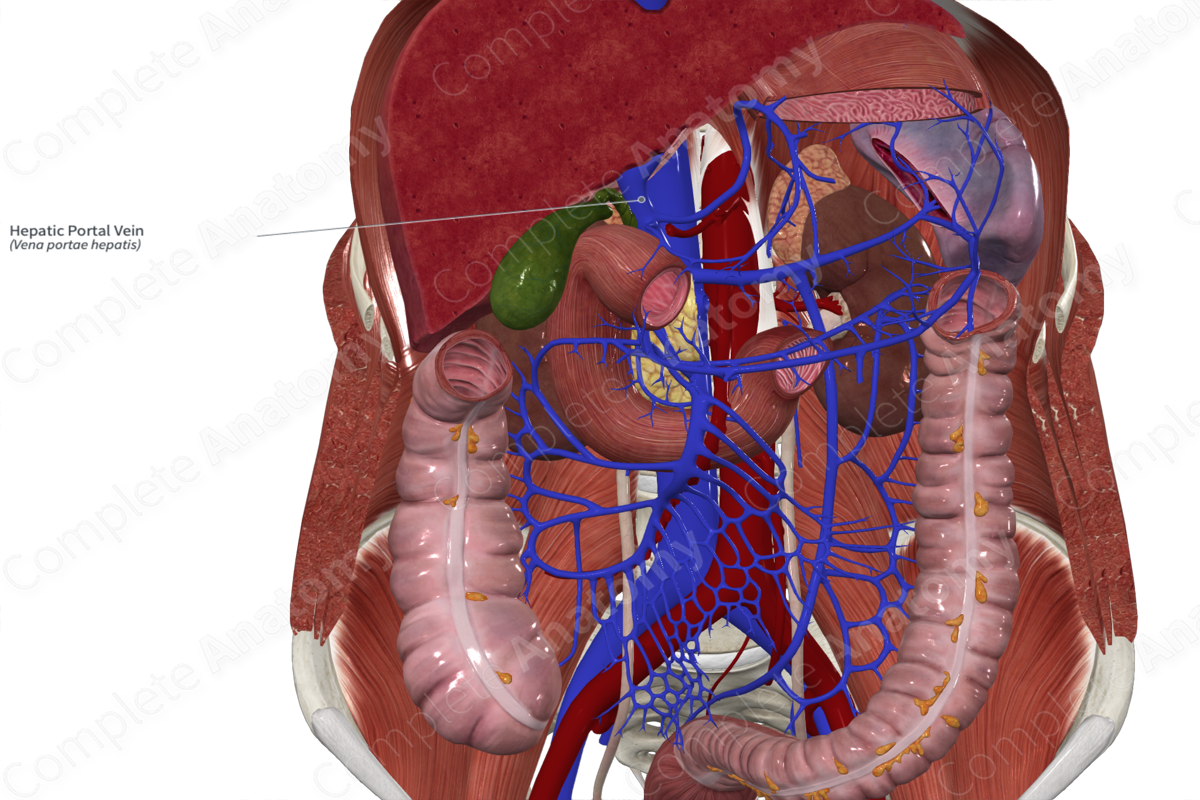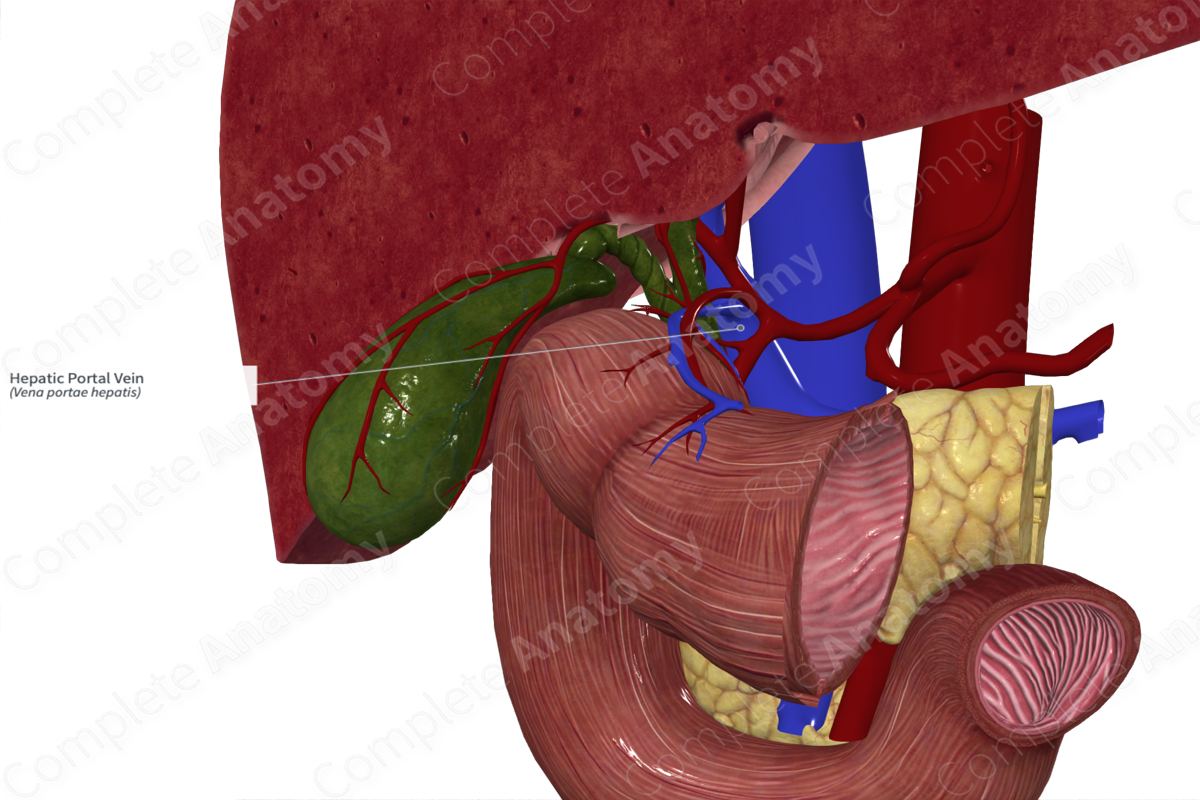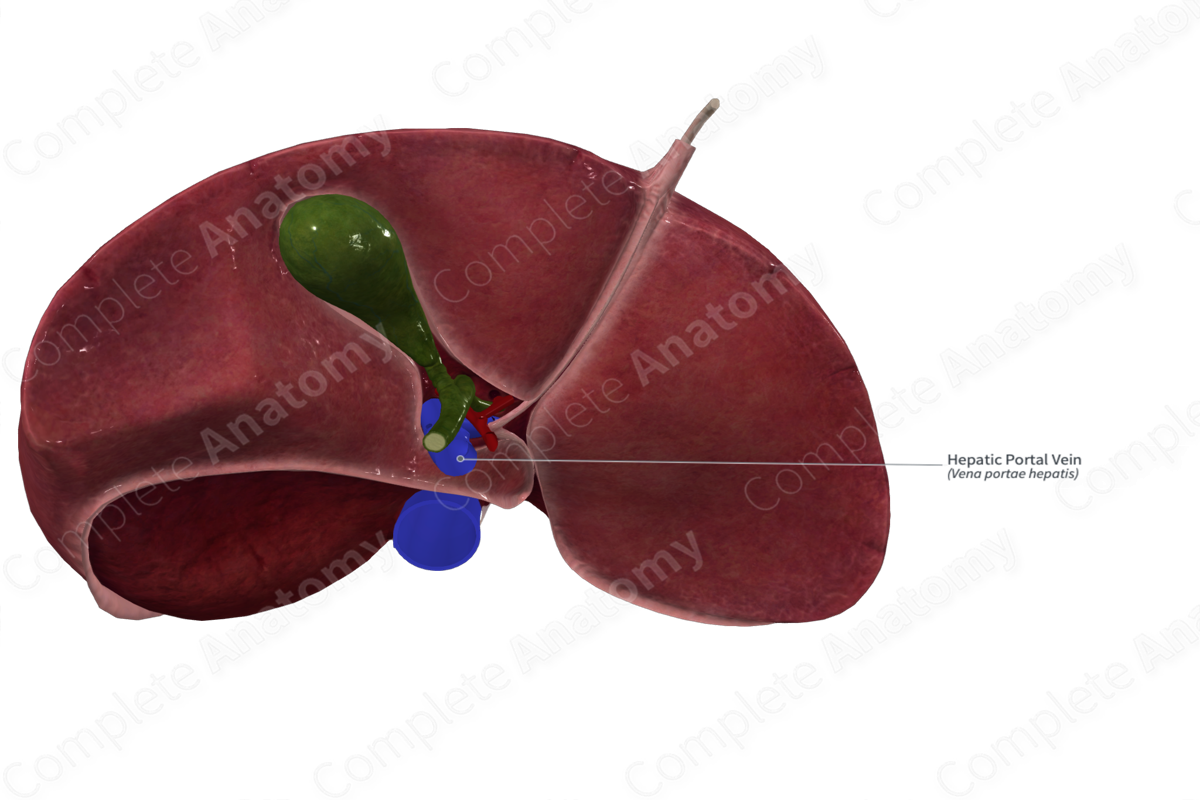
Quick Facts
Origin: Union of the superior mesenteric vein and the splenic vein at the transpyloric plane.
Course: Travels obliquely within the free edge of the hepatoduodenal ligament (lesser omentum) to the porta hepatis of the liver.
Tributaries: Superior mesenteric, inferior mesenteric, splenic, left and right gastric, posterior superior pancreaticoduodenal, and cystic veins.
Drainage: Gastrointestinal tract, spleen, pancreas, and gallbladder.
Origin
The hepatic portal vein is formed from the union of the splenic vein and superior mesenteric vein at the level of the transpyloric plane (L1/L2). Anatomical variations in the origin of the hepatic portal vein are common. In approximately one third of individuals, the inferior mesenteric vein also contributes to the formation of the hepatic portal vein, by merging at the confluence of the superior mesenteric and the splenic vein (Kimura, 2000).
Course
The hepatic portal vein is formed posterior to the neck of the pancreas. It ascends obliquely for approximately 8 cm alongside the common bile duct and hepatic artery proper, within the free edge of the hepatoduodenal ligament (lesser omentum). The hepatic portal vein enters the liver at the right end of the porta hepatis and bifurcates into left and right portal veins.
Tributaries
The hepatic portal vein and its tributaries (splenic, superior mesenteric, and inferior mesenteric veins) form the Hepatic Portal System.
The left and right gastric veins drain into the hepatic portal vein at the level of the first part (or superior part) of the duodenum. The posterior superior pancreaticoduodenal vein drains directly into the hepatic portal vein near the head of the pancreas. The middle colic vein may also drain directly into the hepatic portal vein. The cystic veins may drain directly into the hepatic portal vein or into the left and right portal veins.
Supplied Structures
The hepatic portal vein drains nutrient-rich venous blood from the gastrointestinal tract, spleen, pancreas, and gallbladder into the liver. Blood from the gastrointestinal tract is processed, and toxins, including pharmaceutical agents, are filtered in the sinusoids of the liver.
List of Clinical Correlates
- Pringle Maneuver
- Cirrhosis of the liver
- Porto-systemic shunts
References
Kimura, W. (2000) 'Surgical anatomy of the pancreas for limited resection', J Hepatobiliary Pancreat Surg, 7(5), pp. 473-9.
Learn more about this topic from other Elsevier products





